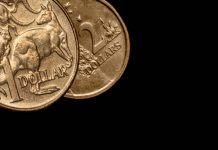Markets:
In a repeat of previous sessions, the core bond sell-off slowed and even went slightly into reverse during a rather dull European trading session. The peace lasted again until the start of US trading when Treasuries started slipping away without strong trigger. Intraday US yield changes are currently close to zero compared to yesterday’s record closing highs, but they are pushing for a break above 5% (2-yr), 4.5%(5-yr), 4.34% (10-yr) and 4.42% (30-yr). The US 10-yr real yield remains stuck around 2%. Simultaneously the dollar started rallying while stock markets came off their intraday rebound highs. EUR/USD fell back from around 1.0930 to currently 1.0860. A disappointing second tier Philly Fed non-manufacturing activity index (-13.1 from 1.4) went unnoticed. Later today, we still get July existing home sales and the more important August Richmond Fed manufacturing index. Richmond Fed Barkin (non-voter) spoke at an event hosted by the Danville Pittsylvania County Chamber of Commerce. His speech was a repeat of the one delivered earlier this month where he suggested that the greater-than-expected easing in inflation in June may be an indication that the US economy can have a soft landing, returning to price stability without a damaging recession. During the Q&A he argued against the idea of changing the inflation target as it risks triggering (another) bond sell-off in a sign of a loss of credibility. Later today, Chicago Fed Goolsbee and Washington Fed Bowman participate in a debate on youth unemployment so they normally won’t touch on monetary policy. Most Fed governors stay low in the run-up to the Jackson Hole meeting at the end of the week. Over the past years, Fed Chair Powell delivered some important messages at this symposium, ranging from changes to the Fed’s inflation target (allowing over- and undershoots) in 2020, over the message that the Fed wasn’t in a hurry to raise rates as economies reopened after the pandemic in 2021 to last year’s eight-minute market scare that the Fed would keep raising interest rates. This year’s focus will much more be on how monetary policy will play out after reaching a peak level and what factors might kickstart rate cuts and on what time horizon. In a lengthy WSJ article, the author and close Fed-source often dropped 3% for core inflation as some kind of arbitrary threshold. Currently, the Fed’s preferred PCE core deflator is still running at 4.1% Y/Y suggesting no inclination at all to let the inflation guard down. On the contrary.
News & Views:
Belgian consumer confidence dipped slightly in August. At -7, the consumer confidence indicator remains close to its long-term average. The very marginal drop in the indicator stems from less favourable expectations regarding the economic situation in general (-17 from -13) and changes in unemployment in particular (20 from 15). Despite the less optimistic outlook on the macroeconomic front, households’ assessments of their own future financial situation have remained unchanged from the previous month (0). On the other hand, they have revised their savings intentions upwards (11 from 5).
August Confederation of British Industry survey data showed that the balance indicator for output in the manufacturing sector dropped sharply from +3 to -19, the lowest level since September. The indicator of new orders also declined from -9 to -15 while the indicator of average selling prices suggests a further cooling of inflation in the manufacturing sector, easing further from 18 to 8. Other data from the Office for National Statistics (ONS) today showed a lower than expected borrowing by the UK government. In July the deficit was reported at £4.3 bn down from £17.9 bn in June. The PSNB in the financial year to July 2023 was £56.6bn, £13.7bn more than in the same four-month period last year but £11.3bn less than the £68bn forecast by the Office for Budget Responsibility (OBR). Public sector net debt was £2,578.9bn at the end of July 2023 and provisionally estimated at around 98.5% of the UK’s annual GDP. Data also showed that the UK government transferred a record £14.3bn to the Bank of England in July to cover losses related to the BoE’s QE asset purchases over the previous years.













